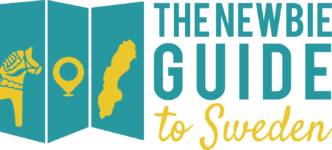Swedes have more days off in May and June (on a good year) than most Americans have in a whole year. Nice, right? But what do all these bizarre names like Röd dag, Klämdag, Halvdag, and Mellandagar actually mean? What is regular work time and what is qualified as overtime? On which day does Midsommar fall? And what hides behind the term Kompledigt?
This Newbie Holiday Guide clears the concepts.
- Arbetstid (work time) & övertid (overtime)
- Röda dagar (red days)
- Halvdagar (half days) & klämdagar (squeeze days)
- Helg (weekend)
- Nationaldagen (National Day)
- Midsommar (midsummer)
- Jul (Christmas) and the concept of Mellandagar (boxing week)
1. Work time & overtime – Arbetstid & övertid
A regular workweek consists of 40 hours and you generally start your day around 8.30 and finish around 17.00. Phone calls are preferably done in the morning, between 9.00 and 11.00. Trying to reach someone during lunchtime is a waste of time; no one will be there to take your call.
Calling after lunch (past 13.00) might work, but you might also hear that the person you are searching has “gått för dagen” which means that he or her left for the day.
You are (if you work at a workplace with kollektivavtal) entitled to övertidsersättning (overtime payment) or kompledighet (compensatory leave for overtime) if you are asked to work overtime.
Note: overtime regulations differ from workplace to workplace, so make sure to check out what applies at your workplace.
2. Red days – Röda dagar
Swedes call their public holidays red days – röda dagar, because these days are printed in red in the Swedish calendars. Swedes celebrate both Christian and non-Christian holidays. Christmas and Easter are accompanied by non-Christian holidays such as nyårsdagen (New Year’s Day), första maj (International Worker’s Day), Sveriges nationaldag (National Day) and midsommar (Midsummer).
3. Squeeze days & half days – Klämdagar & Halvdagar
Another Swedish phenomena are squeeze days – klämdagar which are days that fall between a holiday and a weekend. Swedes often take this day off to extend a weekend or a holiday.
It is also pretty common for businesses to close at noon the day before certain holidays. Swedes call this a half work day – halvdag. There is, however, no legally binding right to a halvdag or klämdag. But some employers allow it any way and other working places have union agreements – kollektivavtal that ensures their employees the right to halvdag and klämdag.
E-learning courses for your best job experience
Are you feeling a bit overwhelmed about finding work in Sweden? Or do you have a job and feel your salary doesn’t match your skills. Or, do you not quite get the unwritten rules at your new job? We’ve got you covered. We know how hard it can be to find a job, get the right pay and feel comfortable in your new Swedish job so we’ve created digital courses with all the information you need:
After finishing these courses, you will be able to navigate your Swedish work situation with skill and comfort.
4. Weekend – Helg
Weekends means recreation time. Saturday and Sundays are spent with family and friends, doing something you really enjoy – partying, running or maybe sleeping. Or doing something necessary, like cleaning the house or going for some shopping. Many shops and groceries stores are open on Saturday and Sundays.
Note: Systembolaget (the state owned liquor shop and the only place to buy alcohol in Sweden) is closed on Sundays and sometimes even on Saturdays. So, make sure to plan your liquor shopping if you wish to have a glas of wine with your weekend dinner.
5. National Day – Nationaldagen
Nationaldagen, which falls on the 6 of June, is not a big event in Sweden. Fans of the royal family can look forward to their yearly appearance at the zoo named Skansen in Stockholm and Newbies who recently received the Swedish citizenships are honoured with special events on this day. However, Swedes are quite low profile with their nationaldag.
6. Midsummer – Midsommar
The big event of the year is midsommar (midsummer). Some Swedes even claim that midsommar should be announced the National Day, due to its popularity. Midsommar always fall on a Friday, mostly between the 19 – 25 of June.
It celebrates the summer solstice and generally includes nubbe (schnapps), sill (herring) and singing and dancing around the midsommarstång (maypole). Midsommar marks the beginning of the summer and is therefore of great symbolic value for the Swedes.
7. Christmas and boxing week – Jul & Mellandagar
Swedes celebrate Christmas on the 24 of December. They eat something called Julbord (a buffet of typical christmas dishes) and watch a TV program called Kalle Ankas Jul (Donald Duck’s Christmas). It is more or less the same program every year but most Swedes still watch it with sacred dedication, as it is a tradition. Christmas gifts are mostly opened shortly before or after Kalle Anka.
Another Christmas concept is Mellandagar, which refers to the days between Christmas and New Years Eve (known to some as Boxing Week). These days are mostly spent eating Christmas food and visiting family and friends. Mellandagarna are also big sale days in Sweden and many swedes shop and change Christmas gifts.
Missing something? Or does something feel unclear? Contact us and help us improve.
